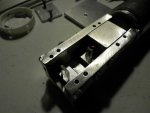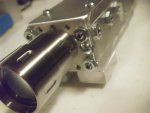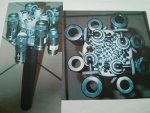Benm
0
- Joined
- Aug 16, 2007
- Messages
- 7,896
- Points
- 113
It is hard to answer that for 100 feet range really.
This distance is not really near, nor really far away. I suppose knife endging the diodes would still be feasible at that range, and much easier to do compared to proper beam combining.
Another thing to realize is that your lasers are not locked to eachother by any means. Each has its own wavelegth, there is not phase locking between them or anything like that, at all.
This is vasly different from the research lasers which actually are synchronous in phase and all that.
This distance is not really near, nor really far away. I suppose knife endging the diodes would still be feasible at that range, and much easier to do compared to proper beam combining.
Another thing to realize is that your lasers are not locked to eachother by any means. Each has its own wavelegth, there is not phase locking between them or anything like that, at all.
This is vasly different from the research lasers which actually are synchronous in phase and all that.










